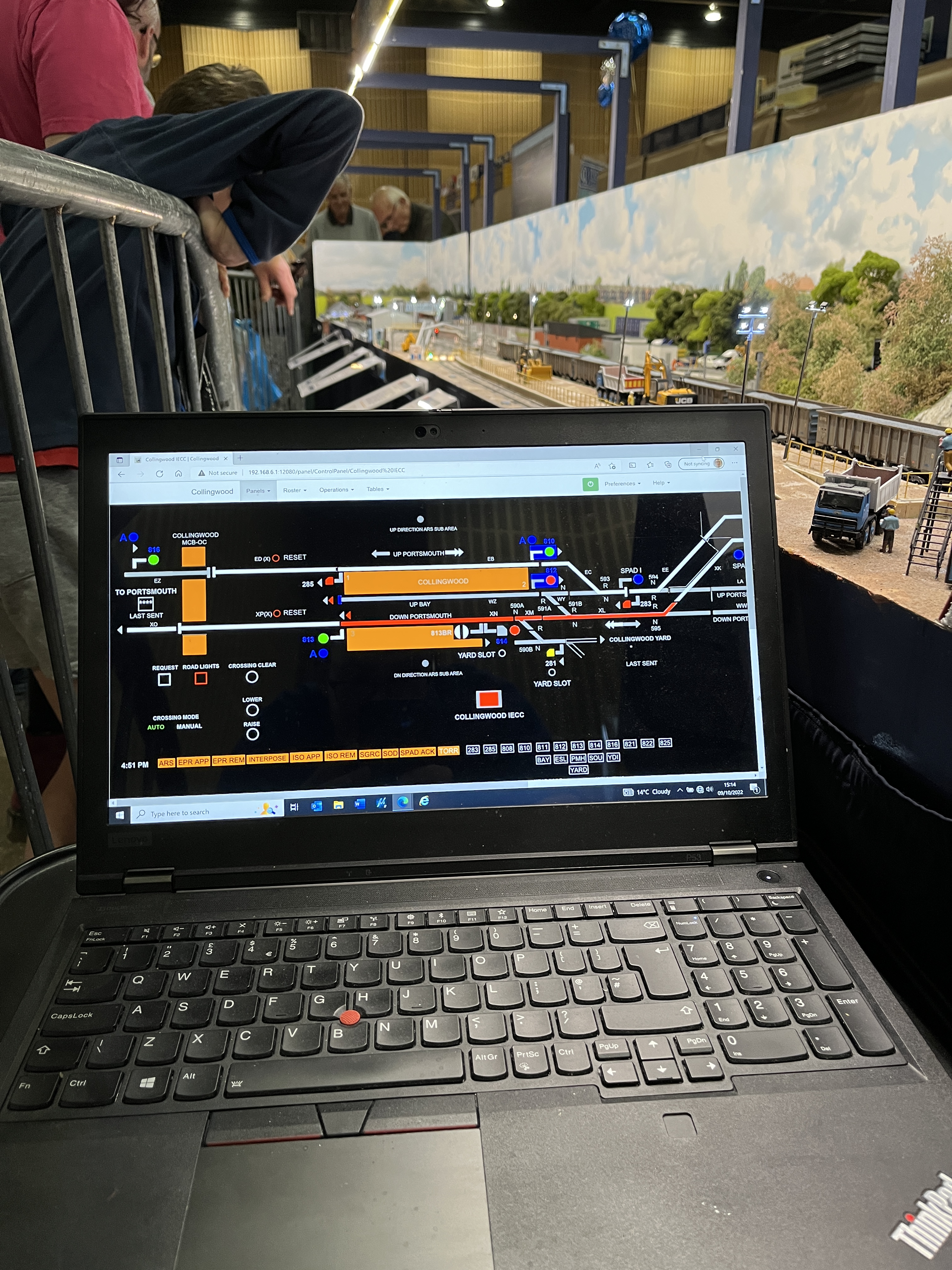The push button interlocking is the mainstay of an NX Panel rather than a VSCS control system, however, as Collingwood effectively uses digital buttons, the circuitry is replicated.
The Push Button Interlocking (PBI), also known as a Push Button Ring, is provided on the majority of panels, however, is really only key when a single panel is being worked by several signallers who may be setting routes simultaneously. If there are several signallers working a single panel, then there is a danger that signaller ‘B’ could accidently finishing setting a route before signaller ‘A’ got the chance to themselves. This could mean that trains are wrong routed or potentially untentional moves being carried out.
To perform this function, all the route setting push buttons within the panel are connected in such a way that pushing one of them effectively prevents any of the buttons being ‘recognised’ by the PBI during the time that the first panel button is pressed, therefore only the push button pushed by signaller ‘A’ would be recognised. The PBI also proves that buttons have returned to their ‘un-pushed’ state before any allowing any other buttons to be recognized, to prevent false route setting due to faulty or ‘sticky’ buttons.
Where a signal is both the entrance to a route and the exit of a route, almost all ‘push-push’ NX panels use a single momentary push button to perform both the entrance button and exit button function. Therefore, the PBI must also recognise whether a single button push means that the signaller is starting to set a route (using the button as an entrance) or is completing the setting of a route (using the button as an exit).
To overcome this, the circuitry relies on three facts:
- Setting a route always begins with an entrance button
- Setting a route only takes two button presses
- Setting a route always ends with an exit button.
This means that when a signaller wants to set a route, the first button pushed by the signaller is recognised by the PBI as an entrance button (regardless of whether the button is actually an entrance button or not). If the button being pushed is actually an entrance button, a relay is picked (energised) to tell the PBI this (if not, the button press is ignored). Once the PBI ‘knows’ an entrance button is pushed, then it will recognise the next button push as an exit button (again, regardless of whether the button is an exit button or not). Again, if the second button really is an exit button, the PBI is told by a relay and then it returns to its normal state ready to recognise an entrance button, otherwise the button push is ignored.
Although this explanation makes it sound like it, the PBI does NOT actually work out whether the signaller has set a legitimate route or not, this is part of the route setting level of the interlocking.
There is another problem that a PBI must tackle; there is the possibility that the signaller may start to set a route but never finish setting it, they may change their mind or get distracted for instance, however with the above circuitry, the PBI will ‘store’ the entrance request until another button is pushed that could later on lead to a route being set that wasn’t intended to be set.
The way to prevent this in the PBI is ‘timing out’ requests. Once a legitimate entrance button is pushed, a timing device is started, if a legitimate exit for that route whose entrance button has been pushed is not selected with a given time period (5 seconds in the case of Collingwood IECC), then the entrance button request is forgotten by the PBI. Technically, the timing out of the entrance request still happens even if a legitimate exit is selected, but by that time, the route is locked within the route setting level of the interlocking and no longer needs a push button input. During this timing process, the signal post symbol on an IECC flashes white.

